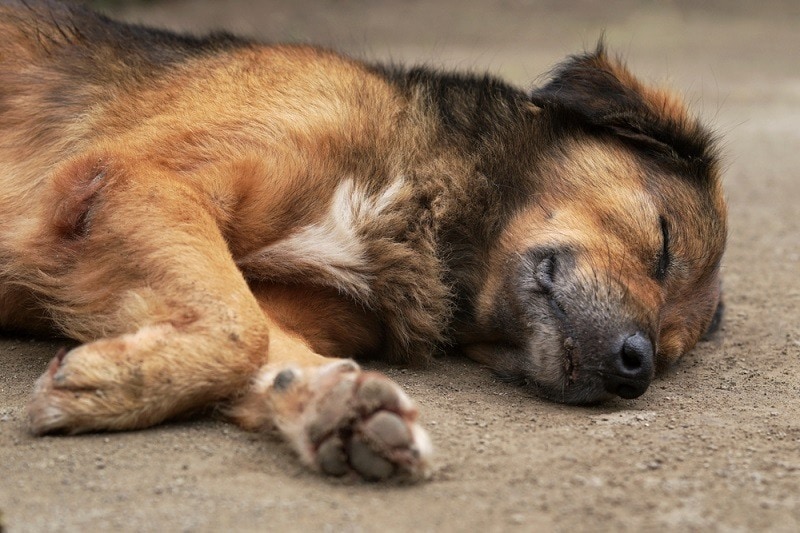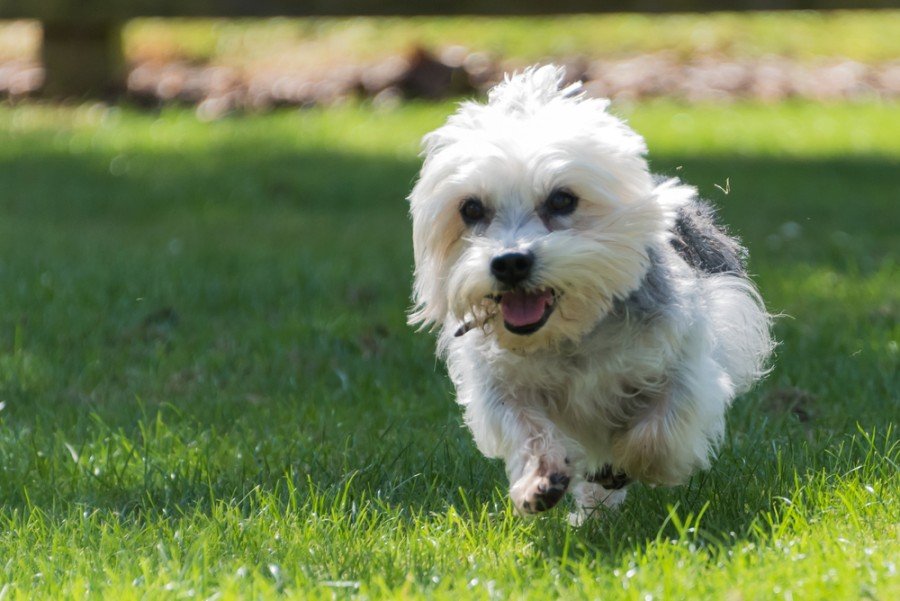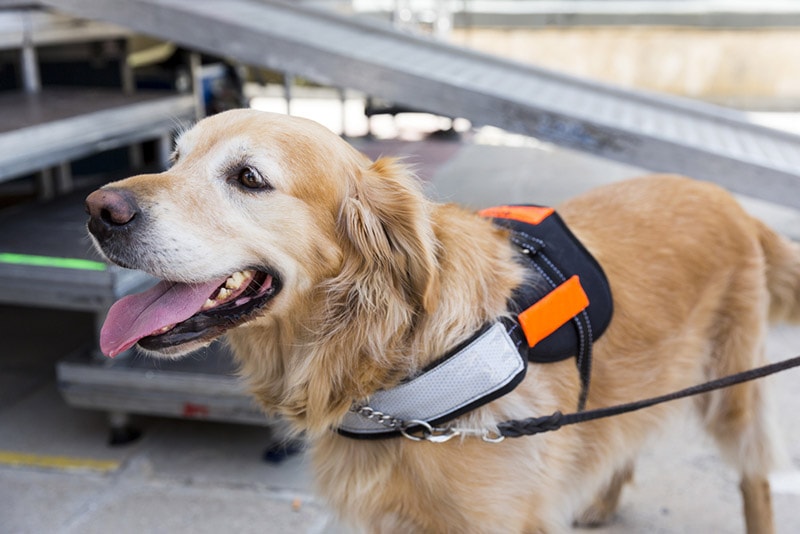What Are Search and Rescue Dogs? 6 Types & How They Work

Updated on
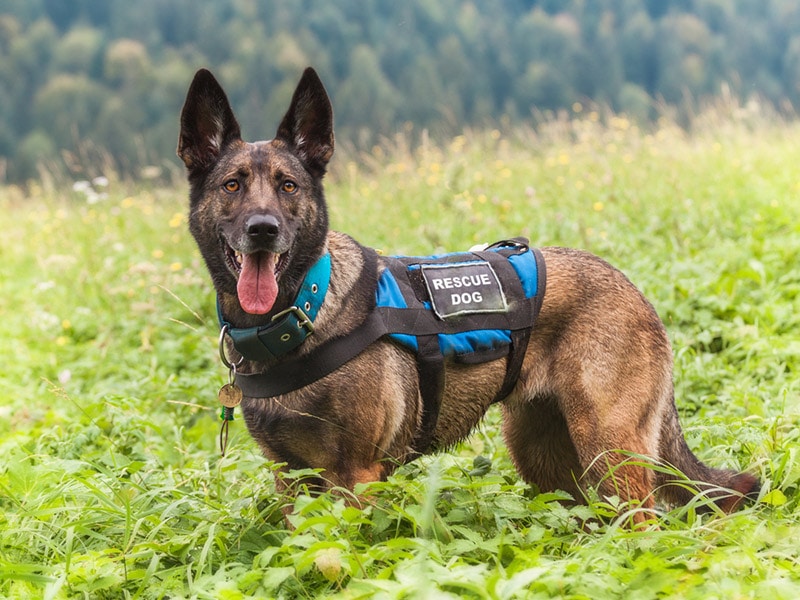
Click to Skip Ahead
Dogs are amazing animals that can be trained for a number of diverse purposes. One of the most impressive and lifesaving jobs that a dog can perform is search and rescue. Search and rescue dogs work with first responders to locate people who are missing or trapped so that they can be attended to in a timely manner. But how do search and rescue dogs actually work? How are they trained? Are there different types of search and rescue dogs? The field of search and rescue dogs is large and diverse, with dogs all over the world doing half a dozen different jobs. Here is everything you need to know about search and rescue dogs.
A Quick Reference Guide
| Type of Search and Rescue Dog | Use |
| 👃 Air Scent | Searching large areas via smells lingering on the air |
| 👷 Disaster | Looking for people in rubble or debris after a severe disaster |
| 🐕🦺 Tracking | Looking for missing people in the wilderness or people who are on the run from the law |
| 💀 Cadaver | Smelling out bodies of the dead for retrieval and recovery |
| ⛰️ Avalanche | Avalanche response, locating missing persons in the snow |
| 🌊 Water | Water rescues, drownings, body recovery |
How Do Search and Rescue Dogs Work?
Search and rescue dogs are specially trained animals that work to locate people so that they can be found or attended to. These dogs work in a variety of different climates, countries, and organizations. Search and rescue dogs use their acute senses of hearing and smell to locate people when nearby humans cannot. Search and rescue dogs can hear sounds that people can’t. They can also pick up on faint scents that humans can never smell on their own. This combination allows dogs to find people, either dead or alive, in situations where people alone could not.
A variety of different breeds can be used as search and rescue dogs. There are a number of different types of search and rescue dogs, and each category prioritizes different species based on what traits they need to get the job done. For example, tracking dogs might be Bloodhounds or Beagles. Some organizations like the versatility of a German Shepherd or a Belgian Malinois. Water rescue outfits might employ a swimming dog, such as a Labrador Retriever. It all depends on what job you need the dog to do.
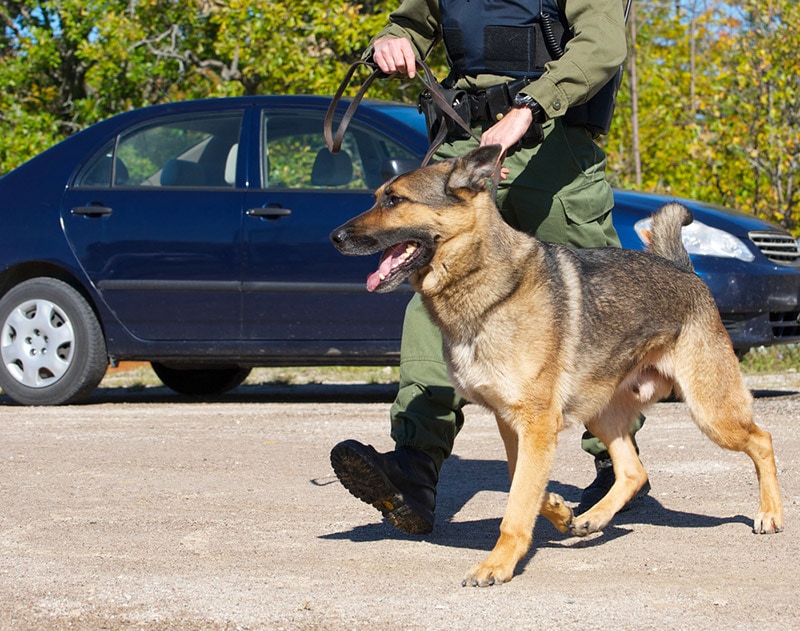
What Are the Different Types of Search and Rescue Dogs?
There are a number of different search and rescue situations, and therefore, there are a number of different types of search and rescue dogs. Each dog in these categories is trained for a different purpose and is selected for specific traits such as eyesight, hearing, and sense of smell.
1. Air Scent (Sniffing)
Air scent dogs, also known as sniffing dogs, use smells carried in the air to locate missing people. These dogs are different from ground scent dogs, which use scents on the ground to find people. Air scent dogs tune into “hot” scents in the air, and they can be used to search a large area very quickly. You can tell if a dog is on to a nearby scent in a matter of minutes, and if they don’t alert you, you can move on to another area. These dogs are used to locate missing children and missing outdoorsmen.
2. Disaster

Disaster dogs are trained to go into disaster zones and find people who might be trapped. These dogs work in areas affected by things like earthquakes, hurricanes, and tornadoes. They can comb rubble and destroyed areas and seek out people who might be trapped and in need of immediate attention. These dogs are vital for disaster response, and they save dozens of lives by locating people who are in time sensitive situations. You can often see disaster dogs on the news in the aftermath of a natural disaster helping recovery teams dig through rubble and debris in search of missing people.
3. Tracking
Tracking dogs use an acute sense of smell to pick up on ground scents. Tracking dogs are used to locate people out in the woods. Tracking dogs can be used to find missing hikers and can also be used to locate people who are on the run, such as fugitives and escaped convicts. These dogs are the epitome of search dogs, but they don’t do much in the way of rescue.
4. Cadaver
Unfortunately, after a disaster or a tragic accident, not everyone survives. For peace of mind, public health, and respect for the dead, cadaver dogs help locate the bodies of people who have perished but might be out of sight. Cadaver dogs search through rubble, look for bodies in the woods, and can even sniff out the dead underwater. Cadaver dogs are vital for finding bodies which are important for closing missing person cases, getting an accurate death toll, and giving families closure after a disaster. They use their noses to sniff out the smell of decaying bodies.
5. Avalanche
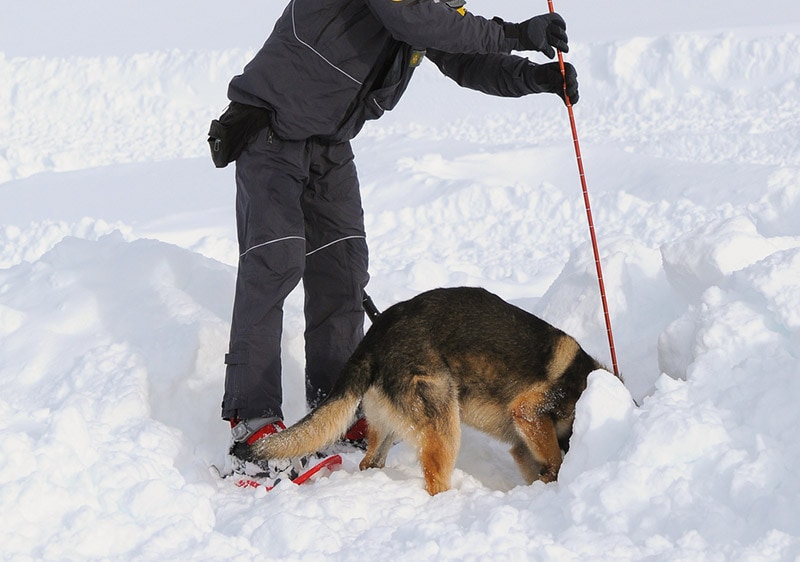
Avalanche dogs accompany rescue teams in the wake of an avalanche. These dogs are trained to operate in snow and cold conditions. They use their noses to smell people who could be trapped under the snow. Some avalanche dogs are even trained to dig out people who could be trapped. Skiers, snowboards, and hikers can fall into tree wells, get buried in snowbanks, or succumb to an avalanche. In these situations where someone goes missing in the snow, the rescue teams will likely bring along an avalanche dog to help in the search.
6. Water
Water rescue dogs are versatile and often assist first responders when responding to a potential drowning incident. Water dogs can help sniff out where someone might have vanished under the water. They can usually swim. Surprisingly, human scent can waft up and out of the water, where it can be picked up by a dog. These dogs are used in missing persons’ cases and can help retrieve the bodies of the drowned. Some cadaver dogs are cross-trained as water rescue and retrieval dogs.
Where Are They Used?
Search and rescue dogs are used all over the world. They are found embedded with law enforcement, international organizations, government agencies, and more. Search and rescue dogs can be found in the woods looking for missing people, in the rubble after a tornado, or in waterlogged streets following a hurricane or flood. Tracking dogs can often be found at prisons, where they can be deployed to go after escaped convicts. They can also be found accompanying the Coast Guard or police when they are working on the water.
Any time there is a situation in which people are missing, trapped, hurt, or in need of assistance, there is a good chance a trained search and rescue dog is nearby.
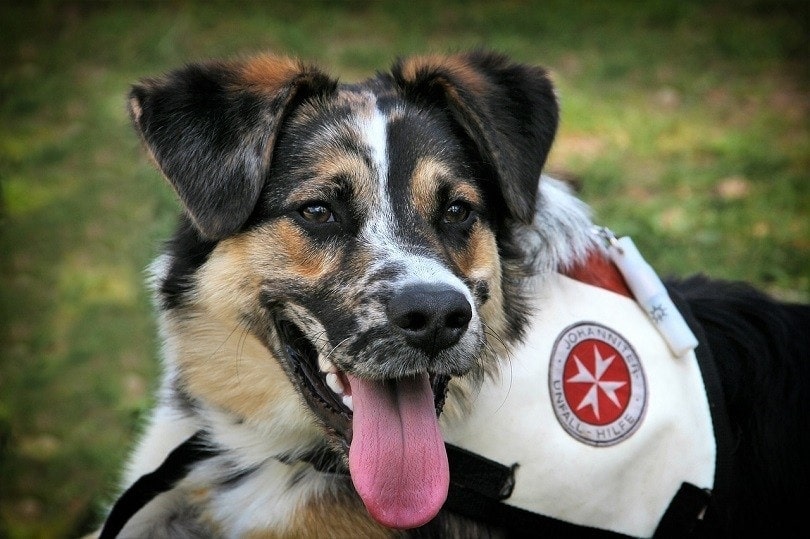
Frequently Asked Questions (FAQs)
How Are Search and Rescue Dogs Trained?
Search and rescue dogs work with a handler. That means that a handler will live with, train, and deploy search and rescue dogs. A handler can own and train multiple dogs at one time. In most cases, search and rescue dogs will not work in the field without their handler present.
Dogs go through extensive training based on what specialization they are slated for. Dogs can spend 600 hours or more training to become legitimate search and rescue dogs. In some countries, search and rescue dogs require certification administered by the state in order for them to be put into the pool of dogs to be tapped during an emergency. That means for dogs to be employed or put on call by a local law enforcement agency, they might have to be certified. Trainers usually spearhead getting their dogs certified.

Who Calls in Search and Rescue Dogs?
First responders and disaster response teams are the ones who use and call in search and rescue dogs. It depends on who is in charge of the jurisdiction where a disaster or missing person is. For example, if people are looking for a missing child, then the local law enforcement office would deploy a search and rescue dog. If someone is suspected of having drowned on a lake in the Northern United States, a fish and wildlife game warden might be the one who calls in a search and rescue dog. In the aftermath of a severe disaster, international non-governmental organizations (NGOs), charities, and response teams might flock to the scene with their own dogs.
The type of response, the location, and the severity of the case will determine whose jurisdiction it falls under. The person in charge, or who has primary jurisdiction, will direct resources as they see fit, which will include (or not include) the use of search and rescue dogs.

 Conclusion
Conclusion
Search and rescue dogs are amazing. They represent the best of the canine-human bond. A properly trained search and rescue dog working with a determined human can save lives. Search and rescue dogs locate hundreds of people a year and are an instrumental part of first responder operations. If you ever find yourself in a tough spot and are awaiting rescue, there is a good chance a dog will help locate you in some capacity.
Featured Image Credit: jasomtomo, Shutterstock

